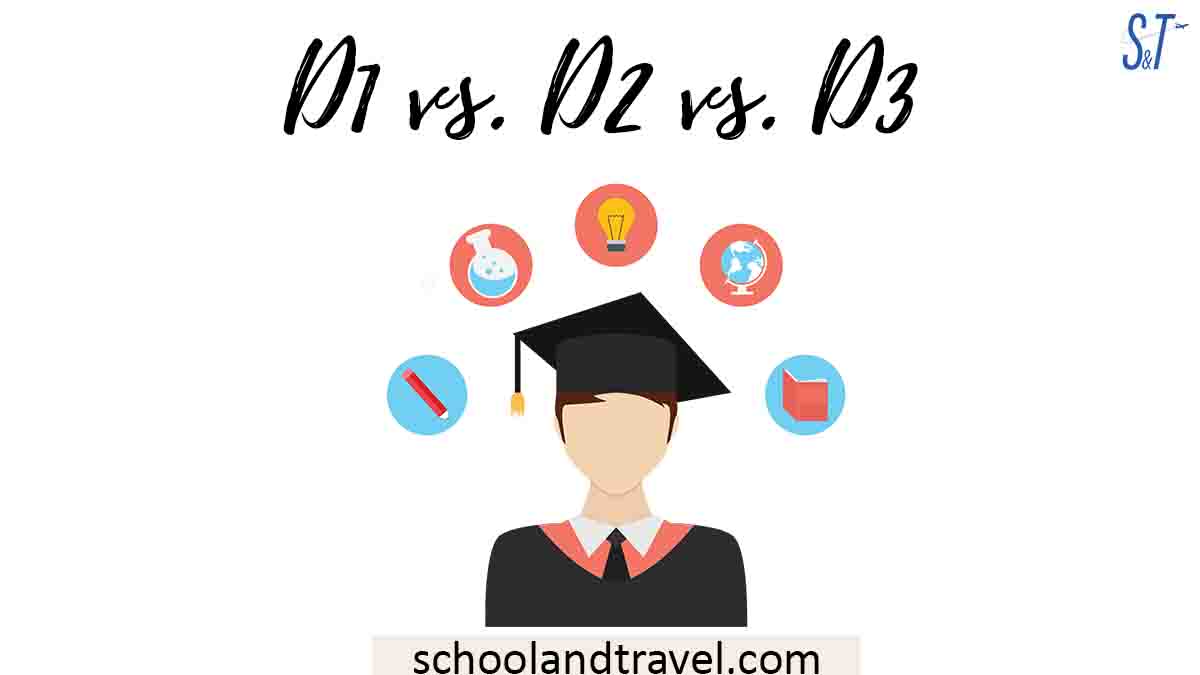Understanding the differences between D1, D2, and D3 athletics is critical for all types of students, from student-athletes looking to participate in college to sports-crazed students who want to attend an institution with a major athletic program.
Continue reading this piece to get the full breakdown of D1 vs. D2 vs. D3 and know how different these divisions are and the way to know which would best fit your current playing style.
D1 vs. D2 vs. D3: Understanding the Different Divisions
Division 1 (D1):
D1 colleges are usually home to exceptional athletes in collegiate sports activities. They are generally the selection for student-athletes with aspirations of pursuing their choice of sport on a professional level.
On average, D1 colleges are America’s largest institutions and feature the biggest enrollments. The average undergraduate enrollment at a D1 college is 8,960 students, over five times more than that of a D3 college, with 1,740 students.
D1 colleges have massive budgets, provide a huge range of sports activities, and offer the highest athletic scholarships.
Division 2 (D2):
D2 takes a different balanced technique to athletics and education and therefore calls for a lower level of dedication than at D1 colleges. In summary, D2 colleges are mid-sized — the average enrollment is 2,428, and 1 in 10 students is an athlete.
A D2 college’s athletics programs are financed in the institution’s finances like different educational departments on campus.
Colleges provide partial scholarships to D2 student-athletes, frequently paired with educational resources and need-based offers to fund the university.
Division 3 (D3)
D3 features a wide variety of colleges. To provide you with an idea, the biggest D3 college has over 25,000 undergraduates, even as the smallest has simply over 400.
The D3 division is likewise home to the finest variety of colleges (438) and the best percentage of students who’re athletes (1 in 6).
Colleges provide funds to D3 athletic programs just like they fund other departments, and students do not get scholarships primarily based on their athletic ability.
D3 sports activities are targeted at the student-athlete experience and inspire institutions to maximize their students’ athletic chances up for grabs.
Read this: Blended Learning (Everything you need to know)
D1 vs. D2 vs. D3: Differences in recruitments
About 7% of all high school student-athletes will eventually play at least a sport when they attend college. The opportunity of these high school student-athletes to play in the Division 1 level is somewhat reduced to about 2%.
It is vital to recognize the differences between D1 vs. D2 vs. D3 to offer yourself a fine shot at playing sport at a collegiate level.
You will initially begin to observe some dissimilarities among the levels while you’re going through the stage of being recruited.
Division 1 coaches will recruit earlier, frequently evaluating youngsters who’re only high school freshmen or sophomores.
Division 2 coaches begin searching for athletes while juniors; however, it normally carries over until senior year as many youngsters trust their D1 talents.
Division 3 coaches usually scout local youngsters; however, they don’t make a move to poach them until these talented student-athletes are in their final year of high school before they begin trying to recruit them officially.
College coaches should recruit in a particular manner, depending on their division.
Moreover, make certain to maintain this in the back of your mind in the recruiting process because it will assist you in knowing where you’re in the process.
D1 vs. D2 vs. D3: Differences in Scholarships
- D1: Of D1 vs. D2 vs. D3, it is the only division that offers full scholarships to student-athletes. It offers full scholarships that cover many, such as books, room, and board, dining plans, tuition, etc.
- D2: It provides a few full scholarships and many partial scholarships.
- D3: D3 is the only of “D1 vs. D2 vs. D3” that does not offer a scholarship to student-athletes. It does not provide any athletic scholarships but can offer some monetary aid packages.
D1 vs D2 vs D3: Differences in Budgets
- D1: Among D1 vs. D2 vs. D3, D1 colleges generally have the highest budgets. Colleges at the Division 1 level have massive budgets. Athletes are supplied with plenty of equipment and fresh uniforms annually.
Training centers are exquisite, with first-class coaches on the ground. Fields/stadiums will seat heaps of individuals and feature massive crowds.
- D2: In this division, some colleges have more budgets than others; however, the biggest budgets at this stage are nevertheless notably lesser when compared to the biggest budgets in D1.
- D3: When D1 vs. D2 vs. D3 budgets are compared, D3 colleges provide the least. Budgets in this division are very little for athletics and are only a step better than budgets from the high school level.
Read this: What does a Prospective Student mean? (Major details)
D1 vs D2 vs D3: Academics
- D1: Colleges in this division are usually well-furnished, with plenty of tutors and advisors to help you stay focused on school work. Going on trips makes college work much more challenging, particularly when a student misses out on class, tests, and assignments.
- D2: Like plenty of different categories, it is a combination of D2. Some colleges can have strong tutoring assistance, while you may likely be alone at other divisions. Going on trips isn’t as huge of an issue, so you won’t have to miss much of academic activities.
- D3: Student-athletes are often not given tutors or advisors; however, they can have plenty of spare time compared to D1 and D2 colleges to complete their schoolwork. Going on trips is hardly ever an issue.
FAQs on D1, D2, and D3 Colleges
The distinction primarily lies in the level of athletic competition and scholarship offerings. D1 colleges generally have larger athletic budgets, more advanced facilities, and more athletic scholarships available than D2 and D3 schools. D2 colleges offer fewer athletic scholarships, and D3 colleges do not offer athletic scholarships at all, focusing more on academics and the overall college experience.
Not necessarily. The athletic division of a college (D1, D2, or D3) doesn’t directly correlate with academic quality. There are academically prestigious institutions in all three divisions. Students should consider both athletic and academic aspects when choosing a college.
D1 colleges often have larger student populations because they’re typically at bigger schools, but this isn’t a strict rule. There are smaller D1 colleges and larger D2 or D3 colleges. The classification is more about athletics than school size.
Athletes can transfer from a D2 or D3 college to a D1 institution. However, there are specific NCAA (National Collegiate Athletic Association) rules and regulations that govern the transfer process, including potential waiting periods or eligibility criteria. It’s essential to consult with athletic advisors and understand the regulations fully.
Conclusion
Playing a sport at any D level in the collegiate world is an honor.
“D1 vs. D2 vs. D3 colleges” can differ significantly in a few areas; however, for the most part, their differences are lesser. There are a variety of myths about those few distinctions.
Discovering which “D1 vs. D2 vs. D3” best suits you will delight you over your collegiate years.
If you aim for levels beyond your skills, you’ll be frustrated for years. Furthermore, you risk throwing yourself into a program blinded like a dart thrower by doing nothing.
Awesome one; I hope this article answers your question.
Share this Information.
Related articles:
- How to make Friends after College (Steps, Processes, FAQs)
- How to Make Friends as a Transfer Student (Reasons, FAQs, Steps)
- How to Make Friends as an Introvert in College
- 10 Actionable Steps to make Friends in your 20s.
- How long does it take to get a teaching degree?
- 25 Questions To Ask College Recruiters For Athletics (FAQs)
- How To Go Back To High School After Dropping Out (FAQs)
- 15 College Roommate Boundaries List (Meaning, FAQs)





